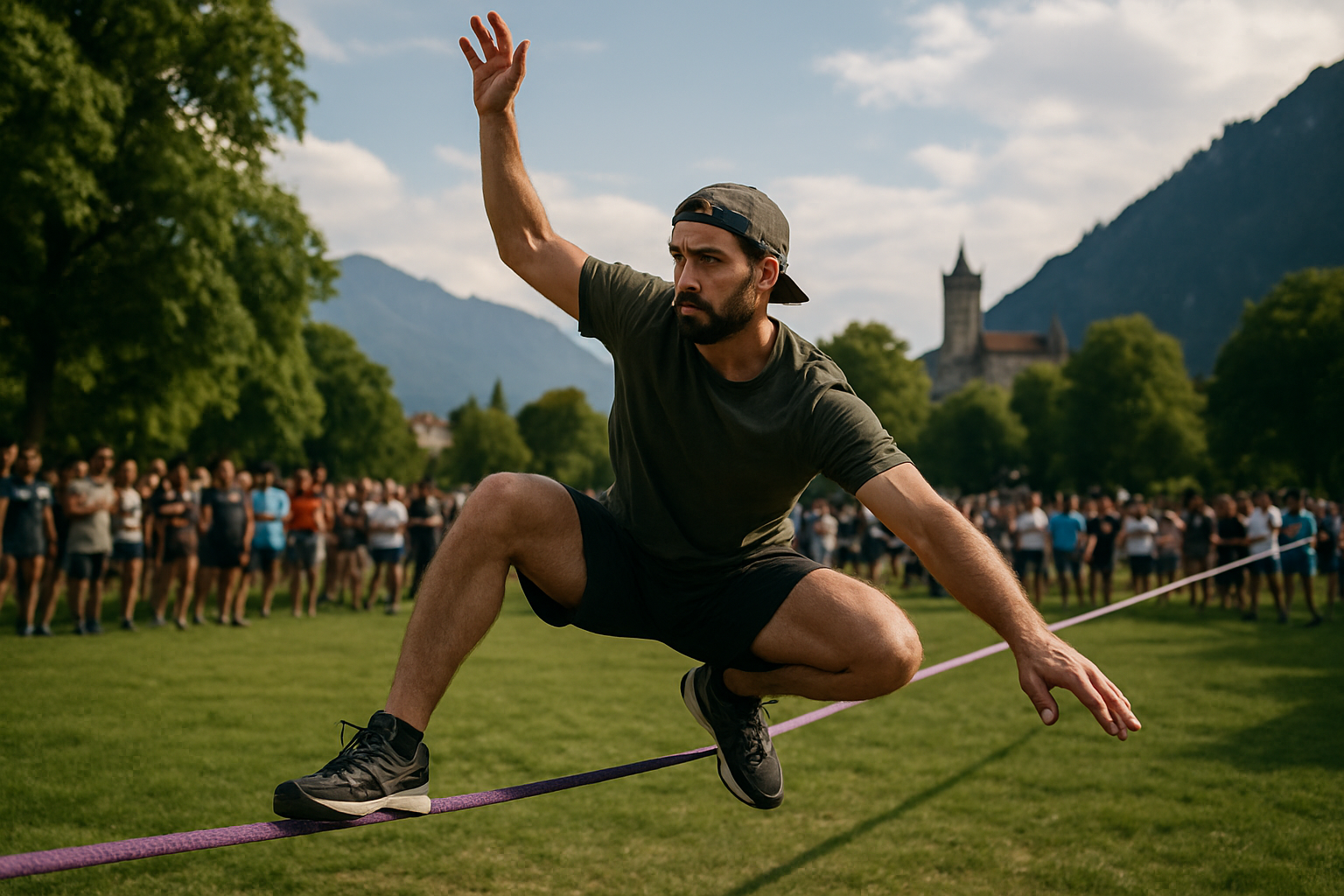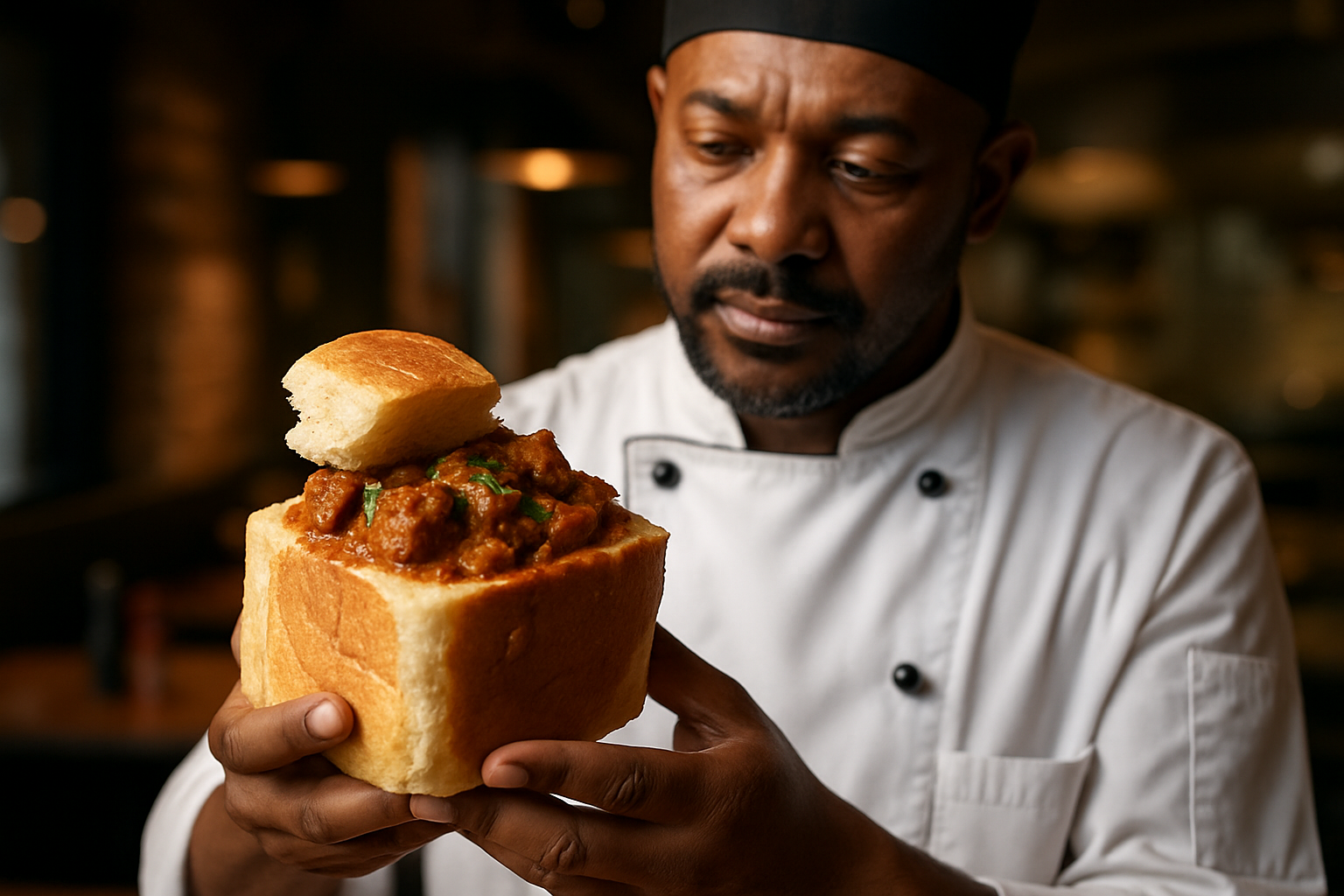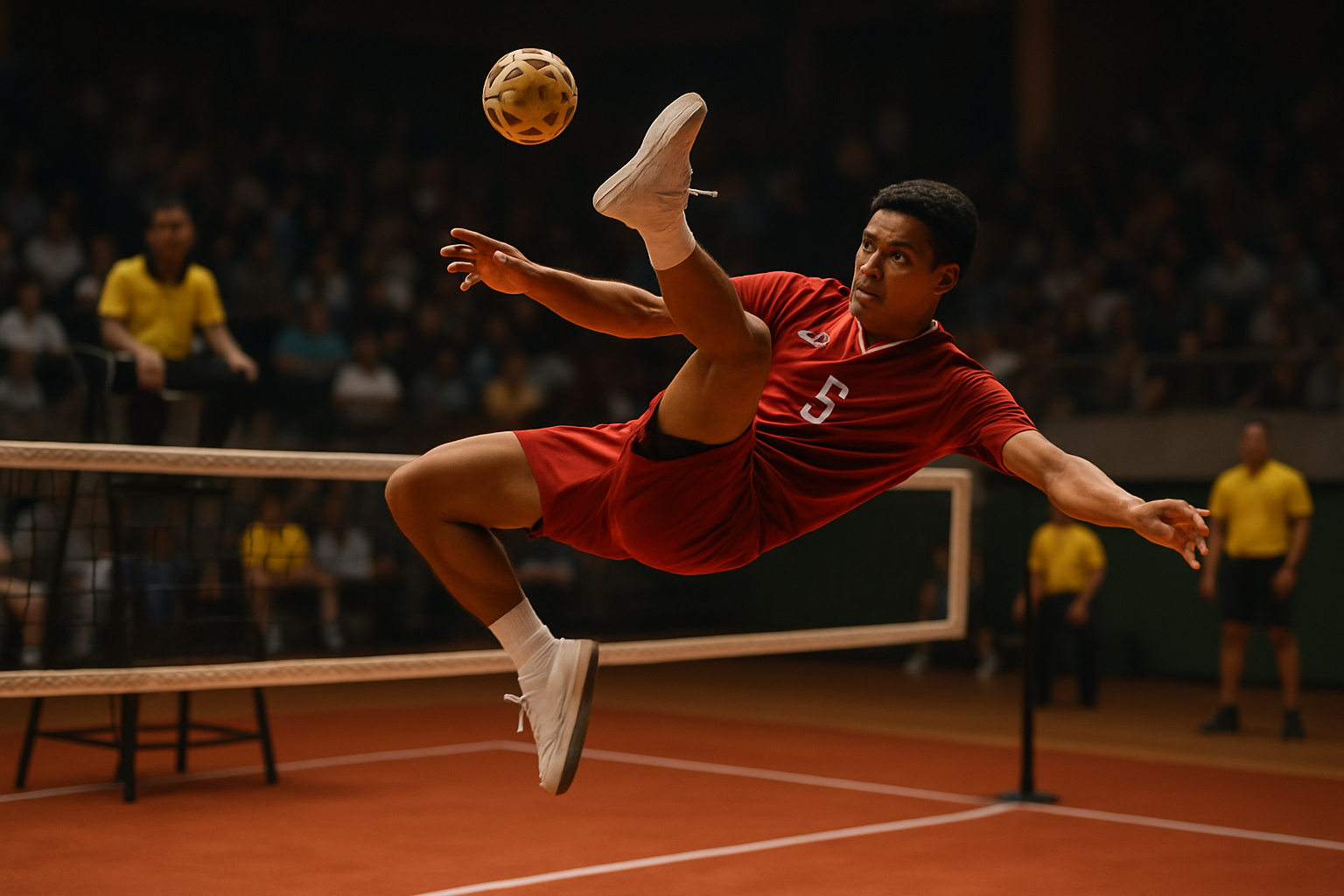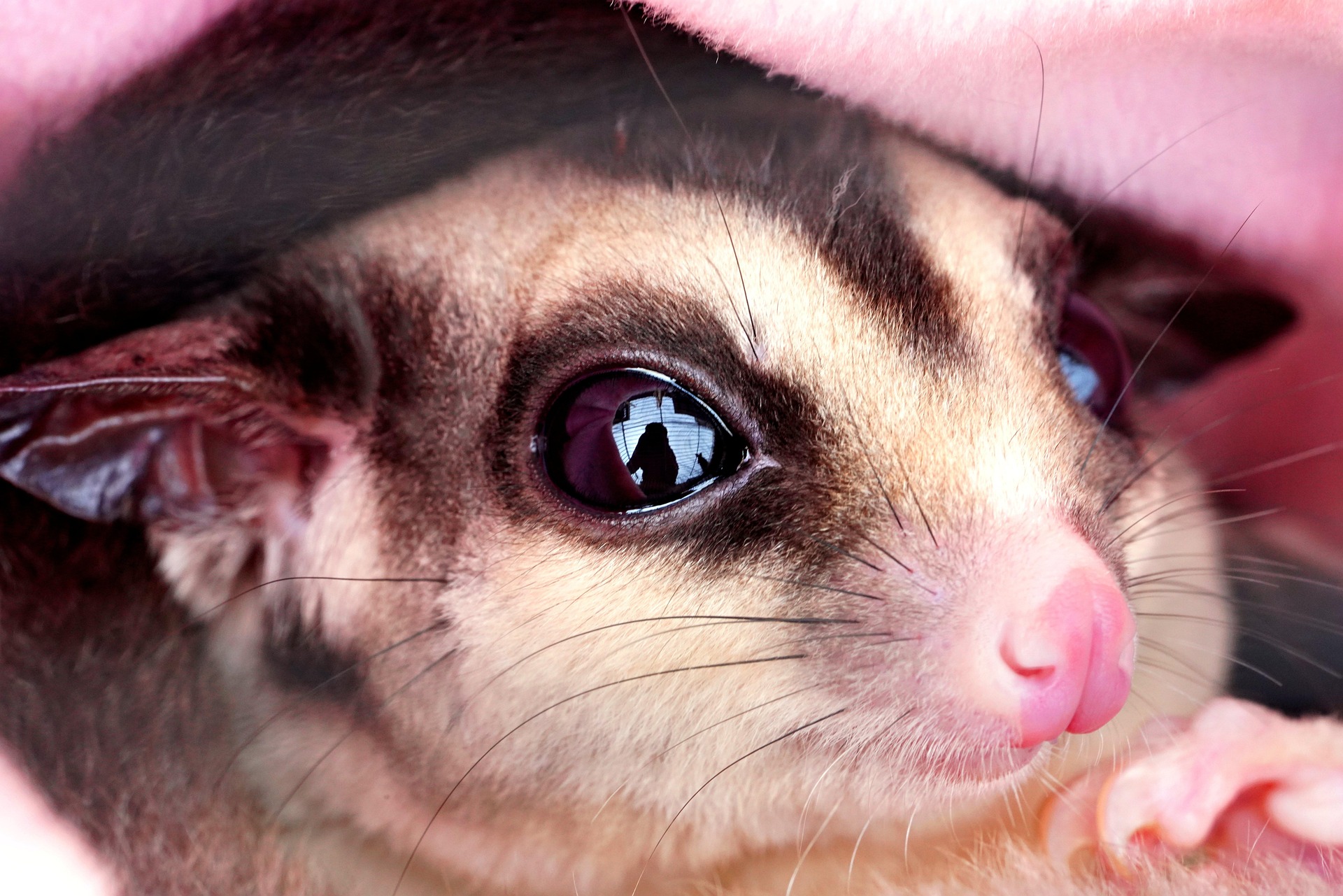Exploring the Intricacies of Competitive Slacklining
Balance, focus, and a touch of adrenaline: welcome to the world of competitive slacklining. This emerging sport pushes the boundaries of human equilibrium, challenging athletes to perform complex tricks and maneuvers on a narrow, flexible line suspended above the ground. As slacklining evolves from a casual park activity to a recognized competitive discipline, it's reshaping our understanding of balance sports and captivating audiences worldwide.

As the sport grew, different styles emerged. Tricklining focused on dynamic movements and acrobatic feats, while highlining involved traversing lines set at dizzying heights between cliffs or urban structures. The development of specialized equipment, including wider and more stable webbing, allowed for greater stability and performance, further propelling the sport’s growth.
The Rise of Competitive Slacklining
The transition from recreational activity to competitive sport began in the early 2000s with informal gatherings and festivals. These events allowed slackliners to showcase their skills and push each other to new heights. The first official slackline competition took place in 2008 in Munich, Germany, marking a pivotal moment in the sport’s history.
Since then, competitive slacklining has seen rapid growth and formalization. The International Slackline Association (ISA) was founded in 2015 to govern the sport globally, establish standardized rules, and promote its development. Today, there are various competitive formats, including tricklining contests, longline competitions, and speed challenges, each testing different aspects of a slackliner’s skill set.
The Technicalities of Competitive Slacklining
Competitive slacklining demands a unique combination of physical strength, mental focus, and technical proficiency. Athletes must master a variety of tricks and transitions, each with varying degrees of difficulty. Common moves include static poses like the chest bounce and buddha sit, dynamic tricks like backflips and 360-degree rotations, and combinations that string multiple elements together in a fluid sequence.
Judging in competitive slacklining is based on several criteria, including difficulty, execution, creativity, and overall performance. Athletes typically have a set time to showcase their best tricks, with points awarded for successfully completed moves and deductions for falls or mistakes. The sport’s subjective nature presents unique challenges for judges and competitors alike, as they must balance technical proficiency with artistic expression.
Training for Competitive Slacklining
Preparing for slackline competitions requires a multifaceted approach to training. Athletes must develop not only their balance and core strength but also their proprioception, mental focus, and ability to perform under pressure. A typical training regimen might include:
- Balance-specific exercises: Practicing on slacklines of varying widths and tensions to improve stability and control.
- Strength training: Focusing on core, leg, and stabilizer muscles to enhance overall body control.
- Flexibility work: Incorporating yoga and stretching to improve range of motion and prevent injuries.
- Mental preparation: Utilizing visualization techniques and mindfulness practices to enhance focus and reduce competition anxiety.
- Trick progression: Systematically learning and perfecting new moves, starting with basic elements and building up to more complex combinations.
Many competitive slackliners also cross-train in related disciplines such as gymnastics, parkour, or martial arts to develop complementary skills and body awareness.
The Physical and Mental Benefits of Slacklining
Beyond its competitive aspects, slacklining offers numerous benefits for both physical and mental well-being. Research has shown that regular slacklining practice can improve balance, coordination, and core strength. A study published in the Journal of Sports Science and Medicine found that just four weeks of slackline training significantly enhanced postural control and reduced the risk of falls in young adults.
Mentally, slacklining promotes mindfulness and concentration. The need to maintain constant focus on the present moment can have meditative effects, reducing stress and anxiety. Many practitioners report improved self-confidence and mental resilience as they overcome challenges and master new skills on the line.
The Global Slacklining Community
One of the most compelling aspects of competitive slacklining is the tight-knit global community that has formed around the sport. Slackline festivals and competitions serve as gathering points for athletes, enthusiasts, and spectators from around the world, fostering a culture of mutual support and shared passion.
This community-driven approach has been instrumental in the sport’s growth and development. Knowledge and techniques are freely shared, with more experienced slackliners often mentoring newcomers. Social media platforms have amplified this effect, allowing for the rapid dissemination of new tricks, training methods, and event information.
Challenges and Future Prospects
Despite its growth, competitive slacklining faces several challenges as it seeks wider recognition and legitimacy in the sports world. Standardization of rules and judging criteria remains an ongoing process, with debates over how to fairly assess and compare different styles and techniques.
Safety concerns, particularly in highlining, require careful management to ensure the sport’s continued growth without compromising athlete well-being. Equipment manufacturers are continually innovating to improve safety features and performance characteristics of slacklines and associated gear.
Looking to the future, many in the slacklining community aspire to see the sport included in major multi-sport events, with some even advocating for its inclusion in the Olympic Games. While this goal may be ambitious, the increasing popularity and professionalization of competitive slacklining suggest a bright future for the discipline.
Environmental and Access Considerations
As slacklining grows in popularity, issues of environmental impact and access rights have come to the forefront. Many popular slacklining spots are in natural areas, raising concerns about potential damage to trees and rock formations. The slacklining community has responded by developing and promoting leave-no-trace practices, including the use of tree protection systems and temporary anchors.
Access to suitable locations for highlining and competition venues can also be challenging, with some areas restricting or banning the activity due to safety concerns or conflicts with other land uses. Advocacy groups within the slacklining community work to educate land managers and negotiate access agreements, emphasizing the sport’s low impact when practiced responsibly.
Innovation in Slackline Technology
The evolution of slacklining equipment has played a crucial role in the sport’s development and competitive growth. Early slacklines were often repurposed climbing webbing, but today’s competitive lines are purpose-built for optimal performance. Innovations include:
- Specialized webbings: Designed for specific disciplines like tricklining or longlining, offering varying levels of stretch and bounce.
- Advanced tensioning systems: Allowing for precise adjustment of line tension to suit different styles and preferences.
- Safety gear: Development of more comfortable and effective harnesses, as well as improved fall protection systems for highlining.
- Portable setups: Lightweight, easy-to-rig systems that have made the sport more accessible and allowed for competitions in diverse locations.
These technological advancements have not only improved performance but also enhanced safety, making competitive slacklining more accessible to a wider range of participants.
The Role of Sponsorship and Media Coverage
As competitive slacklining gains traction, sponsorship and media coverage play increasingly important roles in the sport’s growth. Major outdoor and athletic brands have begun to sponsor top slackliners, providing financial support and exposure. This influx of resources has allowed some athletes to pursue slacklining as a full-time career, further professionalizing the sport.
Media coverage, particularly through online platforms and social media, has been instrumental in bringing slacklining to a wider audience. Spectacular highlining photos and videos of gravity-defying tricks have captured public imagination, drawing new enthusiasts to the sport. However, balancing the desire for attention-grabbing content with the need to promote responsible and safe practices remains an ongoing challenge for the community.
Educational Initiatives and Youth Programs
Recognizing the sport’s potential for personal development, many organizations have begun incorporating slacklining into educational and youth programs. Schools and outdoor education centers are using slacklines as tools for teaching balance, focus, and risk management. These programs not only introduce young people to the sport but also help develop valuable life skills such as perseverance, goal-setting, and overcoming fear.
In some regions, after-school slackline clubs and youth competitions have emerged, providing structured environments for young athletes to develop their skills and compete. These initiatives are crucial for ensuring the long-term growth and sustainability of competitive slacklining by cultivating the next generation of athletes and enthusiasts.
Cultural and Artistic Expressions in Slacklining
Beyond pure athleticism, slacklining has inspired various forms of cultural and artistic expression. Slackline performances, often incorporating elements of dance, circus arts, and music, have become popular at festivals and events. These shows blend the technical skills of competitive slacklining with creative choreography and storytelling, showcasing the sport’s artistic potential.
Some slackliners have pushed the boundaries even further, collaborating with visual artists, musicians, and filmmakers to create interdisciplinary works that explore themes of balance, risk, and human potential. These projects not only expand the creative possibilities of slacklining but also help to introduce the sport to new audiences.
The Psychology of Competitive Slacklining
The mental aspects of competitive slacklining are as crucial as the physical skills. Athletes must contend with fear, maintain focus in high-pressure situations, and recover quickly from setbacks. Sports psychologists working with competitive slackliners often focus on techniques such as:
- Visualization: Mental rehearsal of routines and tricks to improve performance and confidence.
- Mindfulness: Developing present-moment awareness to enhance focus and reduce anxiety.
- Goal-setting: Establishing clear, achievable objectives to guide training and competition preparation.
- Resilience training: Building mental toughness to overcome challenges and bounce back from failures.
Understanding and mastering these psychological elements can be the difference between success and failure in high-level competitions, where the margin for error is often razor-thin.
Slacklining in Urban Environments
While many associate slacklining with natural settings, urban slacklining has emerged as a distinct subculture within the sport. City parks, university campuses, and even specially designed urban slackline parks have become hubs for practice and informal competitions. This urban variant of the sport faces unique challenges, including navigating local regulations and finding suitable anchor points in built environments.
Some cities have embraced urban slacklining, recognizing its potential for community building and promoting active lifestyles. Dedicated slackline areas in public parks, similar to skateparks, have been established in several forward-thinking municipalities. These spaces not only provide safe, legal venues for practice but also serve as gathering points for the local slacklining community.
The Intersection of Slacklining and Other Sports
Competitive slacklining’s influence extends beyond its immediate community, with techniques and training methods finding applications in other sports and physical disciplines. Rock climbers, for instance, use slacklining to improve balance and core strength. Gymnasts and martial artists incorporate slackline training to enhance proprioception and body control.
This cross-pollination of ideas and techniques has led to interesting hybrid events and competitions. Slackline-parkour challenges, for example, combine elements of both disciplines, testing athletes’ ability to navigate obstacles while maintaining balance on a slackline. As the sport continues to evolve, these intersections with other disciplines may lead to new competitive formats and training methodologies.
The Economic Impact of Competitive Slacklining
As the sport grows, it’s beginning to have a noticeable economic impact in certain regions. Slackline festivals and major competitions can draw thousands of participants and spectators, boosting local tourism and hospitality industries. The manufacture and sale of slackline equipment has become a significant niche within the outdoor industry, with several companies specializing in high-performance lines and accessories.
Additionally, the rise of slacklining as a spectator sport has created new opportunities in event management, media production, and athlete representation. While still modest compared to more established sports, the economic ecosystem surrounding competitive slacklining is steadily expanding, providing livelihoods for a growing number of professionals within the industry.
Ethical Considerations in Competitive Slacklining
As competitive slacklining matures, the community grapples with various ethical considerations. One ongoing debate centers around the use of performance-enhancing substances. While not currently a widespread issue, the potential for doping to affect competition outcomes has led to discussions about implementing drug testing protocols in major events.
Another ethical concern relates to risk management, particularly in extreme highlining competitions. Balancing the desire for spectacle and pushing boundaries with the need to ensure athlete safety requires careful consideration and ongoing dialogue within the community.
Environmental ethics also play a crucial role, with competitors and event organizers striving to minimize their impact on natural settings. This includes not only proper equipment use but also considerations around crowd management and waste reduction at large events.
The Future of Competitive Slacklining
As competitive slacklining continues to evolve, several trends are shaping its future:
- Increased professionalization: With growing sponsorship opportunities and more structured competitive circuits, slacklining is likely to see a rise in full-time professional athletes.
- Technological advancements: Ongoing innovations in equipment and safety gear will continue to push the boundaries of what’s possible in the sport.
- Virtual and augmented reality integration: As VR and AR technologies advance, new possibilities for training, competition, and spectator experiences may emerge.
- Global expansion: While currently popular primarily in Europe and North America, efforts are underway to promote competitive slacklining in other regions, potentially leading to a more diverse international competitive scene.
- Educational integration: The incorporation of slacklining into physical education programs and youth sports initiatives may help broaden its base and secure its long-term future.
As competitive slacklining stands on the threshold of wider recognition, it faces the challenge of maintaining its core values and community spirit while adapting to the demands of a growing sport. The passion and creativity that have driven its development thus far will undoubtedly play a crucial role in shaping its future trajectory.
In conclusion, competitive slacklining represents a fascinating intersection of physical prowess, mental acuity, and artistic expression. As it continues to grow and evolve, this unique discipline offers not just a compelling spectator sport, but a powerful tool for personal development and community building. Whether as a competitive pursuit or a recreational activity, slacklining challenges us to find balance in more ways than one, inviting participants to push their limits and redefine what’s possible when we dare to walk the line.





